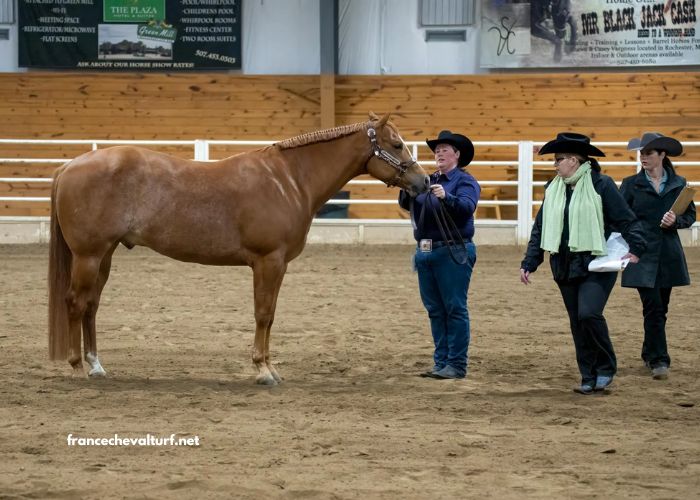Horse racing has long been a thrilling sport, captivating enthusiasts worldwide with its blend of speed, strategy, and sheer unpredictability. Among the many methods and systems devised by bettors to increase their chances of winning, “Les 5 Pions Turf” stands out as a prominent strategy. This system, deeply rooted in the tradition of French horse betting, offers a structured approach to navigating the complexities of the turf. In this comprehensive article, we will explore the intricacies of Les 5 Pions Turf, delving into its history, methodology, benefits, and tips for implementation. Whether you are a novice bettor or a seasoned punter, this guide aims to provide valuable insights into one of the most respected systems in the horse racing betting world.
A Brief History of Horse Betting
Horse racing, often dubbed “The Sport of Kings,” has a rich history dating back to ancient civilizations. From the chariot races of Ancient Rome to the sophisticated flat racing of modern times, the sport has evolved significantly. Betting on horse races became formalized in the 18th century, particularly in England and France, where it quickly gained popularity.
In France, horse racing and betting were institutionalized with the creation of the Pari-Mutuel system by Joseph Oller in the 19th century. This system, where all bets of a particular type are pooled together, laid the foundation for modern betting practices. It was within this context that various betting strategies, including Les 5 Pions Turf, emerged.
Understanding Les 5 Pions Turf
Les 5 Pions Turf, or “The 5 Turf Pawns,” is a betting system that emphasizes strategic selection and disciplined wagering. The system’s name metaphorically represents five key elements or “pawns” that a bettor must consider to optimize their chances of winning. These elements are:
- Selection of Races
- Analysis of Horses
- Jockey and Trainer Insights
- Betting Amount
- Betting Type
Selection of Races
The first pawn in the Les 5 Pions Turf system is the careful selection of races. Not all races are created equal, and the ability to identify the most promising ones is crucial. Bettors are encouraged to focus on races with a smaller field of horses, as these tend to be less unpredictable. Additionally, races with a history of producing consistent winners are preferred.
When selecting races, it’s essential to consider the track’s condition, the distance of the race, and the class of the competition. Some tracks favor certain types of horses, and understanding these nuances can provide a significant edge.
Analysis of Horses
The second pawn involves a thorough analysis of the participating horses. This includes studying their form, past performances, and physical condition. Key factors to consider are:
- Recent Performance: How has the horse performed in its last few races?
- Track Record: Does the horse have a history of performing well on the current track?
- Distance Suitability: Is the horse comfortable with the race distance?
- Class Performance: How does the horse fare against competitors of similar class?
In addition to these factors, bettors should look at the horse’s weight, age, and any recent changes in equipment or training routines. Combining these elements provides a holistic view of each horse’s potential.
Jockey and Trainer Insights
The third pawn highlights the importance of the jockey and trainer. A skilled jockey can make a significant difference in a race, while an experienced trainer can optimize a horse’s performance. Bettors should consider:
- Jockey’s Track Record: How has the jockey performed on this track and with this horse?
- Trainer’s Success Rate: Does the trainer have a history of preparing winning horses?
- Jockey-Trainer Partnership: Some combinations of jockeys and trainers have proven to be particularly successful.
Understanding the human element in horse racing is crucial. The synergy between the horse, jockey, and trainer often determines the race’s outcome.
Betting Amount
The fourth pawn involves determining the appropriate betting amount. Les 5 Pions Turf advocates for a disciplined approach to wagering. Bettors should set a budget and stick to it, avoiding impulsive decisions. The recommended strategy is to bet a consistent percentage of your bankroll on each race, typically between 1% to 5%. This approach minimizes the risk of significant losses and allows for sustained betting over time.
Betting Type
The final pawn is the selection of the betting type. There are various bet types available in horse racing, each with its risk and reward profile. Common types include:
- Win Bet: Betting on a horse to finish first.
- Place Bet: Betting on a horse to finish first or second.
- Show Bet: Betting on a horse to finish first, second, or third.
- Exacta: Betting on the first two finishers in exact order.
- Trifecta: Betting on the first three finishers in exact order.
Les 5 Pions Turf encourages a mix of conservative and aggressive bets, depending on the confidence level in the race analysis. By diversifying bet types, bettors can balance their potential for high returns with the likelihood of winning smaller amounts more consistently.
Benefits of Les 5 Pions Turf
Adopting the Les 5 Pions Turf system offers several advantages:
- Structured Approach: The system provides a clear framework for making informed decisions, reducing the influence of emotions and impulsive bets.
- Risk Management: By focusing on disciplined betting amounts and strategic race selection, the system helps mitigate losses.
- Enhanced Analysis: Emphasizing the importance of detailed horse, jockey, and trainer analysis increases the accuracy of predictions.
- Versatility: The system can be adapted to various betting environments and preferences, making it suitable for both casual and serious bettors.
Implementing Les 5 Pions Turf: Tips and Strategies
To successfully implement Les 5 Pions Turf, consider the following tips and strategies:
Research and Preparation
Invest time in researching the races, horses, jockeys, and trainers. Utilize available resources such as racing forms, expert analyses, and historical data. The more information you have, the better your decisions will be.
Develop a Betting Plan
Create a detailed betting plan that outlines your budget, betting percentages, and preferred bet types. Having a plan in place helps maintain discipline and consistency.
Monitor and Adjust
Regularly review your betting performance and adjust your strategy as needed. Track your wins and losses, and analyze the factors contributing to each outcome. This continuous improvement approach ensures that your betting strategy evolves based on real-world results.
Stay Informed
Horse racing is dynamic, with new horses, jockeys, and trainers entering the scene regularly. Stay updated on the latest developments, including changes in track conditions, injuries, and emerging talents. This information can provide a competitive edge.
Practice Patience
Successful betting requires patience. Avoid the temptation to chase losses or place bets on every race. Stick to your plan and wait for the right opportunities to present themselves.
Conclusion
Les 5 Pions Turf is a time-tested betting system that combines strategic race selection, thorough analysis, and disciplined wagering. By focusing on the key elements of race selection, horse analysis, jockey and trainer insights, betting amount, and betting type, bettors can increase their chances of success in the unpredictable world of horse racing.
Whether you are a novice looking to improve your betting skills or a seasoned punter seeking a more structured approach, Les 5 Pions Turf offers valuable guidance. Remember, the key to successful betting lies in preparation, discipline, and continuous learning. Embrace the principles of Les 5 Pions Turf, and you may find yourself mastering the art of horse betting.




